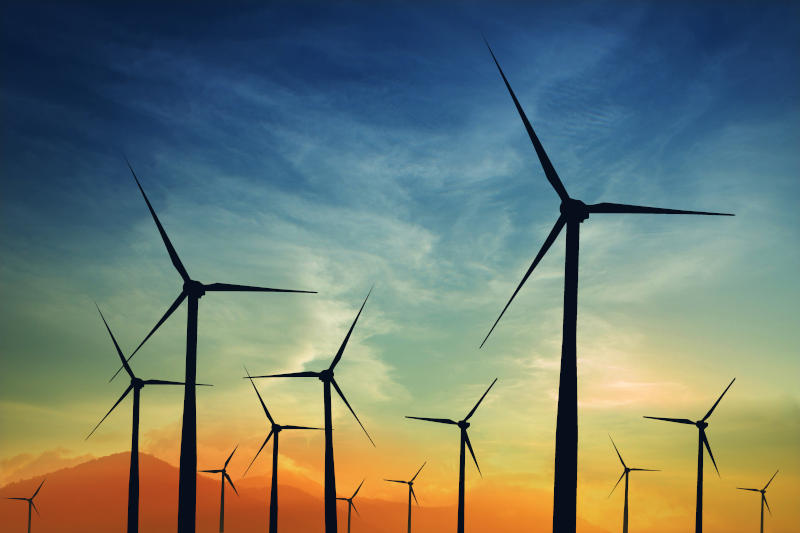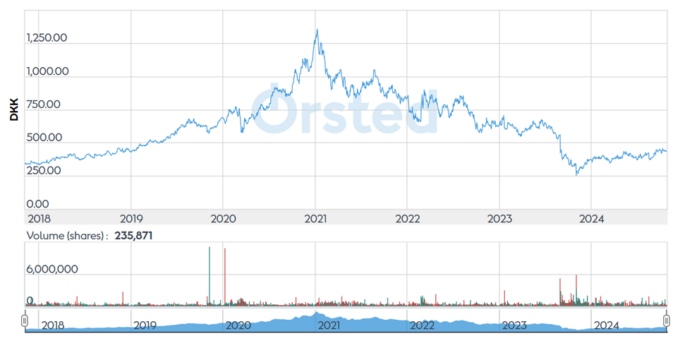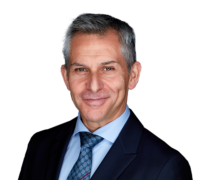
Case study
Case Study Quadrant 4
by Salvatore Cantale, Frederikke Due Olsen Published March 3, 2025 in Case study • 5 min read
Full divestiture of ESG-heavy assets
DONG Energy’s decision to rebrand as Ørsted
The problem
In the early 2000s, DONG Energy, now known as Ørsted, faced mounting challenges from regulatory and environmental pressures as global attention shifted toward sustainable energy. With European regulators tightening emissions standards and the rise of international agreements like the Paris Accord, DONG’s carbon-heavy assets in oil, gas, and coal were increasingly vulnerable to compliance costs and stranded asset risks. Simultaneously, investors and stakeholders were moving capital toward companies with robust environmental, social, and governance (ESG) practices, prioritizing organizations aligned with clean energy goals.
Additionally, the evolving energy market presented a compelling opportunity. Demand was diversifying, driven by advancements in renewable technologies like wind and solar, which were becoming more cost-competitive and widely adopted. Consumers and industries were increasingly seeking a reliable, mixed-energy approach that included renewable options, creating an opening for DONG to lead in areas like offshore wind. This shift in energy demand presented DONG with a clear path to future-proofing its business through alignment with global sustainability trends.
The strategy
Recognizing these challenges, DONG Energy developed a long-term strategy to transform its business and become a leader in renewable energy. The company’s vision was clear: to be future-ready in a world where sustainability and clean energy would dominate the energy market. This transformation was not a short-term shift, but a carefully planned, multi-year strategy aimed at realigning DONG’s operations, investments, and brand.
1. Divesting carbon-heavy assets
The first step in DONG’s transformation was the decision to divest its carbon-heavy assets. The company began to systematically exit its oil and gas businesses, selling off assets to other companies that specialized in fossil fuel production. In 2017, DONG sold its oil and gas production business to the chemical company INEOS for $1.3 bn. This sale allowed the company to eliminate its direct involvement in fossil fuel extraction and free up capital to invest in renewable energy. By shedding these assets, DONG reduced its exposure to volatile fossil fuel markets and regulatory risks while signaling a clear commitment to its new sustainability-focused strategy.
2. Investing in offshore wind
The cornerstone of DONG’s strategy was a major investment in offshore wind energy. Offshore wind was an ideal fit for DONG due to Denmark’s geographic location and the country’s leadership in wind energy technology. DONG had already started investing in wind power in the early 2000s, but it was the company’s decision to go “all-in” on offshore wind that would define its future.
DONG leveraged its experience in large-scale energy projects and infrastructure development to rapidly expand its offshore wind portfolio. The company invested heavily in new offshore wind farms in Europe, particularly in the North Sea and the Baltic Sea. DONG also expanded its operations globally, entering new markets such as the United States and Asia, where offshore wind was seen as a key component of the clean energy transition.
3. Rebranding as Ørsted
As part of its transformation, DONG Energy rebranded itself as Ørsted on 6 November 2017. The new name paid tribute to the Danish scientist Hans Christian Ørsted, who discovered electromagnetism. The rebranding was more than just a cosmetic change; it reflected the company’s new identity as a global leader in renewable energy. The Ørsted brand symbolized the company’s commitment to sustainability, innovation, and the future of energy.
The rebranding also marked a clean break from the company’s past as a fossil fuel giant. By rebranding, Ørsted could reposition itself in the minds of investors, customers, and the public as a champion of green energy, rather than a traditional energy company struggling to keep up with the times.
The results
Ørsted’s transformation from a fossil fuel-reliant company into a renewable energy leader has delivered impressive environmental and financial results. By strategically divesting from fossil fuels and heavily investing in renewable energy, Ørsted achieved a leading position in the offshore wind market. By 2023, Ørsted held about 25% of the global offshore wind market, providing clean electricity to millions of homes across Europe and expanding projects in the US and Asia. These projects secured long-term contracts with governments and utilities, generating stable revenue and reducing exposure to the volatility of fossil fuel markets.
Financially, Ørsted’s transformation attracted significant interest from investors focused on sustainability, as it aligned with ESG principles. The company’s stock value rose substantially during the shift, reflecting investor confidence in its renewable energy strategy.

In 2021, Ørsted could claim that it reduced the greenhouse gas (GHG) intensity of its energy generation and operations by 87% since 2006. Additionally, it aims for carbon neutrality by 2025, and net zero by 2040.
CEO Henrik Poulsen, in an interview with Corporate Knights, which ranked Ørsted as the world’s most sustainable company, said: “In the past 10 years, we have transformed from a company that had fossil fuels at the core of its business to being essentially a pure-play renewable energy company. If you look at the transformation of the company, it has been dramatic.”
Conclusion
Ørsted’s transformation from DONG Energy, a fossil fuel-reliant company, to a global leader in renewable energy represents one of the most successful business pivots in the energy sector. By divesting its carbon-heavy assets, investing heavily in offshore wind, and rebranding itself as a sustainability-focused company, Ørsted positioned itself to be future-ready in a rapidly changing energy landscape. The company’s success not only demonstrates the financial viability of renewable energy but also highlights the importance of forward-thinking leadership in addressing the challenges of climate change. Ørsted’s story serves as a blueprint for how traditional energy companies can transform themselves to thrive in a low-carbon future.
Greenwashing claims
When Ørsted divested its carbon-heavy assets to focus on renewable energy, the move received mixed reactions. While some praised the pivot toward sustainability, others accused the company of “greenwashing,” suggesting that selling fossil fuel assets simply transferred emissions to other companies rather than actively reducing them.
In response, Ørsted emphasized its genuine dedication to sustainability and its strategy to become a renewable energy leader. The company stated that divesting carbon-heavy assets allowed it to concentrate resources on clean energy, particularly offshore wind, which could displace fossil fuel use on a broader scale. By committing to a zero-carbon future and reinvesting in renewable infrastructure, it underscored that it was redirecting efforts to make a global impact on emissions, not shirking responsibility. To reinforce this stance, the company set ambitious targets, including carbon neutrality by 2025, and received third-party validation. The company also emphasized that it was transferring its assets to a corporate asset owner, a company that had the integrity of managing those assets in a professional manner.
Authors

Salvatore Cantale
Professor of Finance at IMD
Salvatore Cantale is Professor of Finance at IMD. His major research and consulting interests are in value creation, valuation, and the way in which corporations structure liabilities and choose financing options. Additionally, he is interested in the relation between finance and leadership, and in the leadership role of the finance function. He directs the Finance for Boards, Business Finance, and the Strategic Finance programs as well as the Driving Sustainability from the Boardroom program and the newly designed Bank Governance program.

Frederikke Due Olsen
Frederikke Due Olsen holds an MSc in Finance and Accounting from Copenhagen Business School (CBS) and MBA (with Honors) from IMD. With a background in equity research and short stint within university teaching, previous employers include SEB Group, Carnegie Investment Bank and CBS. Passionate about greenfield renewable energy investments, she works for Copenhagen Infrastructure Partners within its Flagship Investment Team.